#Best Web Development Platform 2020
Explore tagged Tumblr posts
Text
Comparing the Top Online Trading Apps: Which One Is Right for You?
The online stock trading app industry has experienced a tremendous surge since the onset of the pandemic in 2020. Thanks to improved internet speeds and the growing interest in financial literacy, mobile-based stock trading has undergone a significant transformation. Each day, more Indians are experiencing the seamless shift towards incredibly smooth and flexible trading options, all available at the touch of a button.
As these apps continue to gain widespread adoption, even beginners can enter the world of trading with ease. These applications not only enable the buying and selling of financial assets but also offer a range of other valuable services. The only requirement is a reliable internet connection to ensure these trading apps operate smoothly.
This article has listed some of the best online trading apps so that you can choose any one of them.
Top Three Online Trading Apps
The list of the best online trading app is as follows.
1. Zerodha Kite
Zerodha boasts over 100 million active clients, contributing significantly to India's retail trading volumes, making up about 15% of the total. This app is highly recommended for both beginners and experienced traders and investors, thanks to its robust technological platform.
Zerodha's flagship mobile trading software, Kite, is developed in-house. The current Kite 3.0 web platform offers a wide array of features, including market watch, advanced charting with over 100 indicators, and advanced order types such as cover orders and good till triggered (GTT) orders, ensuring swift order placements.
Furthermore, users can also utilise Zerodha Kite as a Chrome extension, enabling features like order placement and stock tracking for added convenience.
2. Kotak Securities
Opening a trading account at Kotak Securities comes with the advantage of zero account opening fees. Additionally, there are discounted rates for investors below 30 years of age, making it a cost-effective option. The account setup process is streamlined, with minimal steps involved.
Kotak Securities enables users to engage in a wide range of financial activities, including trading in stocks, IPOs, derivatives, mutual funds, currency, and commodities. Furthermore, it offers opportunities for global investments through its trading app. This app is thoughtfully designed, featuring a user-friendly interface accessible on iOS, Android, and Windows platforms. It also provides valuable extras like margin funding, real-time portfolio tracking, and live stock quotes with charting options.
3. Upstox
Upstox PRO, supported by Tiger Global and endorsed by prominent investors like Indian tycoon Ratan Tata and Tiger Global Management, is a well-known discount broker app. It offers a range of trading and investment opportunities, encompassing stocks, currencies, commodities, and mutual funds. For experienced and seasoned investors, it is an ideal choice, featuring advanced tools such as TradingView and ChartsIQ libraries.
Online trading apps offer a diverse array of financial products and services, consolidating your investment and financial management in one convenient platform. You can engage in activities such as trading equities, participating in IPOs, trading derivatives, investing in mutual funds, placing fixed deposits, dealing in commodities, and trading currency.
2 notes
·
View notes
Text
Creating a Mental Health App in 2024
Features, Costs and Monetization
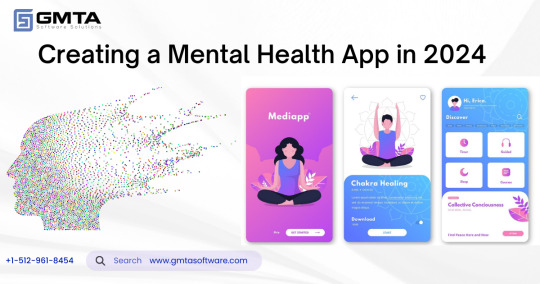
Uncertainty caused by the COVID-19 epidemic and its aftermath is contributing to a worsening mental health crisis. But so are applications that help individuals manage their mental health, and they’re becoming increasingly popular and lucrative.
Statista predicted that between 2020 and 2022, the market for mobile Mental Health App would expand by 82.5%, amounting to 491 million USD in sales.
Create a platform that helps many people find inner calm and contentment by developing an app for mental wellness.
This article discusses the definition, possible benefits, and construction of Mental Health App. As a bonus, it walks you through each step.
Start right now!
What exactly are mental health apps?
Apps designed specifically for keeping tabs on your mental health are known as “Mental Health App.”
From apps aimed at those with specific illnesses and disorders to those that offer generalized help, the mental health business is incredibly varied.
How To Develop a Mental Health App- Nice To Have Essential Features
You now know the most important metrics to track when you design your mental health app. Let’s move right along to the things that make a difference in performance and customer satisfaction. When it comes to on demand Mobile App Development, the best Mobile App Development Companies will always provide you with the following:
The Most Important Features of a Mental Health App:
User Registration

Collect necessary information, including name, contact details, and email, in a safe and simple sign-up process for health apps.
User Profiles

Users can add information about themselves in mental health apps, such as their medical history, allergies, chronic conditions, age, gender, and even images.
Notifications and Reminders

While taking care not to overwhelm users, schedule notifications and reminders like relaxation sessions, journal entries, and medication in the best mental health apps.
Sharing
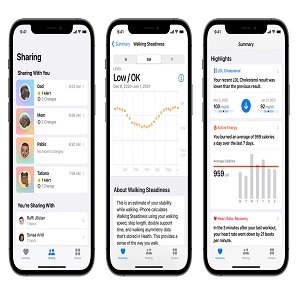
Allow individuals to broadcast their emotional state and the progress they’ve made in therapy to their loved ones, friends, healthcare practitioners, and online support groups.
Support Communities

Create a sense of belonging by facilitating user-to-user conversation in safe, anonymous settings like forums, chats, and other similar bonds in your Mental Health App.
Patient-Therapist Connection

Use algorithms to match users’ requirements with the proper therapists and help them get in touch with each other.
Therapy Dashboard for Doctors

Provide therapists with a dashboard on the web where they can manage patient data, collect statistics, and keep track of their patients’ development.
Reminders for Patients

Help people keep up with their treatment plans by setting up drug reminders.
Secure Messengers and Chats

Whether using text, audio, video, or live chats, the best therapy apps should provide a safe space for patients and therapists to talk.
Relaxation Exercises
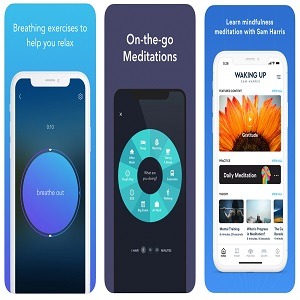
Include simple games, meditation, yoga, breathing exercises, and other relaxation methods to assist in unwinding, unsharpening, and sharpening their minds.
Gamification
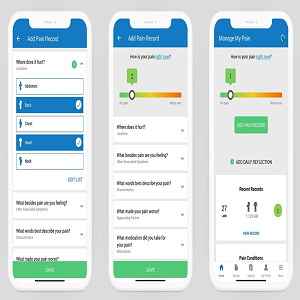
To make mental health care more interesting and fun, designers can implement interactive games with upbeat and soothing aesthetics.
Emergency Support

Make it possible for people experiencing anxiety or panic attacks to send urgent messages to loved ones or support groups.
Customizable Calendars
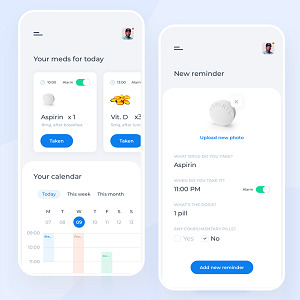
Calendars that may be personalized in this way can be used to plan out mental health practices and daily routines.
Mindfulness and Meditation
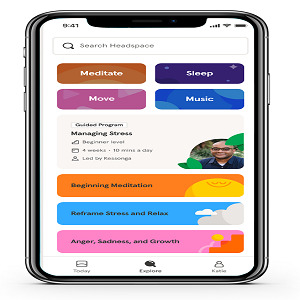
Provide several different types of guided meditation and mindfulness practices to help with stress reduction and cognitive focus.
Data Security and Privacy

Protect sensitive user information by adhering to rules like HIPAA that emphasize data privacy and security.
If you’re building a Mental Health App to help people improve their mental health, consider including these functions.
Monetization Strategies for Mental Health App Development
Developing a successful business plan is crucial before starting work on a Mental Health App.
You can choose from the following well-liked revenue models:
Freemium Model
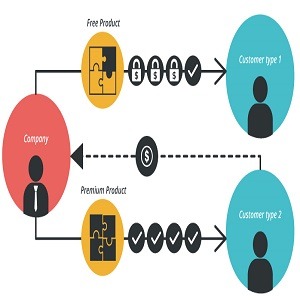
Offering a combination of free and paid tiers is a popular strategy. Users can use the Mental Health App for free up to a certain point but can then make in-app purchases to access premium features and content. One variant is to provide the entire app functionality for free for a limited time, after which users must pay to keep access to the premium features.
Subscription Model

The idea behind subscriptions is that users would pay regularly to gain access to ever-evolving media like how-to guides, videos, and podcasts. Monthly, quarterly, and annual subscriptions are the most common payment intervals offered by apps. Plans can be tailored to meet the needs of individual customers. Users who only use the apps that help with mental health sometimes but want to save money in the long run might consider a subscription.
Paid Apps

In contrast to the freemium model, the users of premium applications must pay a fee before using the app’s functionality. The best Mobile App Development Company may sweeten the deal by including exclusive extras or updates with the paid version.
How Much Does It Cost to Develop a Mental Health App?

Several factors, such as the app’s complexity, functionality, platform (iOS, Android, or both), and development location, can greatly affect the cost of creating a mental health app. However, a ballpark figure is as follows:
· Basic Mental Health App:

The going rate for a basic Mental Health App with features like mood tracking, journaling, and access to self-help materials is around $12,000.
· Mid-level Mental Health App:
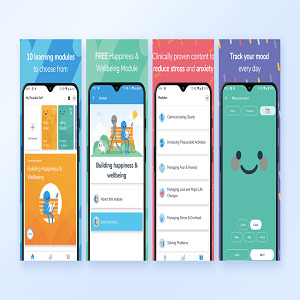
$15,000-$20,000 for an app with advanced capabilities, including encrypted therapist communication, custom treatment plans, and automated reminders.
· Advanced Mental Health App:
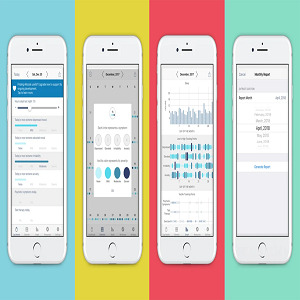
Costs can reach up to $50,000 or more for sophisticated mental health software with features like teletherapy, artificial intelligence-driven mood analysis, and wearables integration.
Remember that there are expenditures beyond original creation, such as maintenance, upgrades, and server space. The complexity of the app’s design, as well as the development team’s (in-house or outsourced) decision to create it, can also affect the final price tag.
Getting an accurate price suited to your app’s requirements and goals requires consulting with expert on demand App Development services.
In this age of constant connectivity, Mental Health App can be downloaded and used whenever needed. They enable people to reach out for assistance in times of crisis without feeling ashamed or embarrassed.
These programs provide a secure environment to share difficulties and find ways to cope with them. Hiring a Mobile Application Development Services might help you take your idea from concept to marketable product.
1 note
·
View note
Text
Unlock the Future: Join the International Young Coders Program by Clevered

Empowering the Next Generation of Innovators Through Fun, Global-Standard Programming Classes for Kids
In today’s rapidly evolving world, coding is no longer just a skill—it's a superpower. As digital natives, children have an innate affinity for technology. What they need is the right platform to channel that potential. That’s where Clevered’s International Young Coders Program steps in—a world-class initiative designed to turn curious kids into confident creators.
Whether your child is a beginner, a tinkerer, or a budding tech genius, Clevered offers the best coding classes for kids, curated to engage, educate, and empower young minds globally.
🌍 What Is the International Young Coders Program?
The International Young Coders Program (IYCP) is Clevered’s flagship coding program, bringing together students aged 6 to 17 from over 25 countries. Designed to make programming fun, accessible, and effective, IYCP blends global teaching standards with child-centric pedagogy.
We don’t just teach kids how to code—we help them think logically, solve problems, and express their creativity through technology.
From simple block-based programming for younger learners to advanced Python, JavaScript, AI, and app development tracks for older students, IYCP is a complete journey through the world of coding.
🎯 Why Learn Coding Early?
Incorporating coding into a child’s education is no longer optional—it's essential. Here’s why:
Future-Proof Skill: Over 70% of emerging careers will require coding or computational thinking.
Enhances Academic Performance: Coding boosts performance in math, logic, and science subjects.
Stimulates Creativity: Children can build games, animations, apps, and even robots.
Fosters Confidence: Creating something from scratch empowers kids and builds resilience.
Promotes Global Collaboration: IYCP connects young coders across the world, encouraging teamwork and intercultural communication.
💡 What Makes Clevered the Best Coding Platform for Kids?
1. Global Curriculum with Local Relevance
Clevered’s curriculum is aligned with international benchmarks like ISTE, CSTA, and NEP 2020. We incorporate real-world applications and challenges that resonate with kids worldwide, while respecting local educational frameworks.
2. Live, Interactive Sessions with Expert Mentors
All classes are taught live by certified, background-verified coding mentors who are trained in child psychology and instructional design. Whether your child is shy or outspoken, our mentors ensure every student is heard, guided, and supported.
3. Project-Based Learning
At Clevered, kids don’t just watch—they do. Every course is packed with hands-on projects, game-building, and app development that keeps children engaged and excited to learn more.
4. Flexible Pathways and Certifications
From foundational to advanced levels, students can explore various coding tracks:
Block-Based Coding with Scratch
Web Development with HTML/CSS
Python Programming for Kids
Game Development in Unity
Artificial Intelligence & Machine Learning
Mobile App Development
Robotics & IoT (coming soon)
After every module, kids receive a globally recognized certificate and badges they can proudly share with schools and future employers.
🚀 The Young Coders Advantage
Clevered’s International Young Coders Program is not just a class—it’s a launchpad. We believe children learn best when they are:
Inspired: Our stories, examples, and challenges are drawn from real-life innovation and current technology trends.
Supported: Parents receive monthly progress reports, project snapshots, and mentor feedback.
Challenged: With quizzes, hackathons, coding olympiads, and more, we keep the excitement alive.
By joining IYCP, your child becomes part of a global coding community, unlocking new friendships, ideas, and perspectives every day.
📚 Class Structure: Designed for Kids, Loved by Parents
Every class in the IYCP is crafted with one goal in mind—engaging young minds effectively.
✨ Course Highlights:
Class Size: Small group and 1-on-1 options
Duration: 12 to 24 weeks per level
Frequency: 1–2 sessions per week
Platform: 100% online, with optional offline project kits
Tools Used: Scratch, Code.org, Thunkable, Replit, Python, Arduino simulators, and more
👩🏫 Who Teaches?
Our mentors are not just coders—they’re educators first. With experience in both international classrooms and tech firms, Clevered mentors bring the best of both worlds. Each teacher undergoes extensive training and continuous evaluation to ensure your child gets the highest-quality learning experience.
🎉 Beyond the Classroom: Clubs, Contests & Community
We believe in building creators, not consumers. That’s why the IYCP includes:
Global Hackathons & Coding Olympiads
Themed Monthly Challenges (e.g., Code for the Planet, Women Who Code Week)
Peer-to-Peer Projects
Digital Portfolios & GitHub Showcases
Startup Simulation Weeks (Older kids build and pitch tech startups!)
And yes, we also host fun events like Code & Play Fridays, where kids code games and then challenge each other in a friendly competition!
💬 What Parents Are Saying
🎓 Student Spotlight
Meet Zara, Age 12, from Dubai. She joined the IYCP Beginner Level in 2023 and within 6 months had built her own mobile quiz app for school kids. She’s now mentoring junior students and preparing for international coding contests.
Meet Nathan, Age 14, from Kenya. A regular participant in Clevered Hackathons, Nathan won the Silver Badge for his weather app and is now developing a climate action tracker with peers from Canada and India.
Your child could be next.
🔐 Safe, Certified, and Screen-Conscious
We understand parents' concerns about screen time and online safety. That’s why we ensure:
End-to-end encrypted sessions
COPPA and GDPR compliance
Screen time balance through offline coding kits and logic puzzles
No ads, no distractions—only learning
🛠️ Enrollment Made Easy
Joining the IYCP is simple and flexible:
Free Coding Assessment – We evaluate your child’s current level
Personalized Learning Plan – Tailored roadmap based on interest & ability
Easy Scheduling – Choose class times that fit your family’s routine
Affordable Plans – Monthly, quarterly, and annual packages with sibling discounts
🌟 Limited-Time Offer: Enroll Now & Get Free Access to "Code Champs 2025"
For a limited time, new enrollees in the International Young Coders Program will receive FREE access to Code Champs 2025—Clevered’s premier global coding championship for kids, with prizes worth $10,000!
Are You Ready to Let Your Child Code the Future?
Don’t just let your child use technology—let them create it. With Clevered’s International Young Coders Program, you're not just signing up for classes. You're unlocking a world of innovation, confidence, and global opportunities.
🚀 Visit https://www.clevered.com/Young-Coders-Program to schedule your free trial today.
Let your child learn to code, create, and conquer—with Clevered, where future coders begin.
0 notes
Text
Beyond Cartoons: Exploring Diverse Careers in 2D Animation

For many, the term “2D animation” still conjures images of Saturday morning cartoons and nostalgic hand-drawn characters from the 90s. But the reality is, 2D animation has evolved into a versatile career field that goes far beyond childhood entertainment. With the rising demand for visual storytelling across industries—films, education, advertising, UX/UI, gaming, and even healthcare—2D animators are playing central roles in shaping how ideas are communicated today.
As industries become increasingly content-driven, the scope for skilled 2D animators has expanded tremendously. And thanks to the accessibility of modern tools and software, the animation space is no longer restricted to large studios. Today’s animators work independently, remotely, or as part of small teams delivering high-impact visuals globally.
Let’s explore how 2D animation careers are diversifying, the skillsets required, and the exciting roles that aspiring animators can pursue.
The Expanding Universe of 2D Animation Careers
Once confined to cartoon studios, 2D animation now plays a vital role in:
Advertising: Brands now heavily rely on animated explainers, product promos, and digital ads to engage audiences.
Education & E-Learning: Animated content simplifies complex concepts for all age groups, making learning more accessible.
Gaming: Mobile and indie games often feature rich 2D characters and environments that need skilled animators.
Healthcare: Animated illustrations and videos are being used to explain medical procedures and health awareness campaigns.
Social Media & Web: Short-form content and GIFs, often powered by 2D animation, dominate social feeds.
Film & OTT: Feature films and streaming platforms continue to release hand-drawn or stylized animated series and documentaries.
These developments point to a dynamic and resilient industry where creativity and storytelling meet technology.
Core Roles in 2D Animation
As 2D animation integrates into various sectors, a range of specialized roles has emerged:
1. Storyboard Artist
They lay the groundwork for animation projects by sketching scenes that map out the story, character movements, and visual transitions.
2. Character Designer
A key creative role that involves conceptualizing and designing characters based on story, emotion, and target audience appeal.
3. Background/Layout Artist
Responsible for setting the scene, these artists design and create environments and perspectives in which the animated characters exist.
4. 2D Animator
They bring characters to life using motion principles like squash and stretch, timing, and anticipation. These animators work on frame-by-frame animation, cutout animation, or rig-based animation.
5. Compositor
These professionals assemble the final animation by combining characters, backgrounds, effects, and audio for a seamless experience.
6. Motion Graphics Designer
Blending graphic design and animation, this role is key for producing animated logos, transitions, or social media reels.
Not Just Technical: Soft Skills Matter
While knowing software like Adobe Animate, Toon Boom Harmony, and After Effects is essential, soft skills are equally critical:
Storytelling: Even the best motion work falls flat without compelling narrative structure.
Collaboration: Animators often work closely with writers, directors, voice artists, and musicians.
Time Management: Whether freelancing or in-house, animation projects require strict timelines.
Adaptability: The industry shifts quickly. Being open to learning new styles and tools is vital.
The Freelance Advantage
Freelancing in 2D animation has gained popularity post-2020. Remote platforms like Fiverr, Upwork, and Behance have made it easier for animators to find global clients. Today’s artists can build a sustainable income through personalized animated content for YouTube channels, corporate explainers, or even NFT-based collectibles.
With growing access to tablets, open-source animation software, and global marketplaces, the barriers to entry have significantly lowered. It’s no longer necessary to be in a big studio or a metro city to land a good project.
Industry Spotlight: 2D Animation in India
India has steadily grown into a global animation hub, catering to projects from the U.S., Europe, and Southeast Asia. With an estimated CAGR of over 11%, the Indian animation industry is expected to grow to $5.3 billion by 2027.
In 2025 alone, platforms like Netflix and Disney+ Hotstar have commissioned over 20 India-based animated titles. These aren't just mythological adaptations but also contemporary stories aimed at global Gen Z audiences.
Startups in edtech, fintech, and digital media are constantly hiring animators to build engaging explainer videos and onboarding journeys. This growth isn't just fueling job creation but also leading to curriculum innovation across animation institutions.
Emerging Trends to Watch
The future of 2D animation is being shaped by several exciting developments:
AI-Assisted Animation: Tools like Adobe Firefly and RunwayML are speeding up frame generation and asset clean-up, allowing animators to focus on creativity over grunt work.
Hybrid Styles: Mixing 2D and 3D elements for stylized output is trending in both games and web series.
Micro-Animations for UI/UX: Companies are hiring animators for subtle web and app interactions that enhance user experience.
AR & Interactive Storytelling: Animated overlays for AR-based education, training, or entertainment are gaining traction.
According to AnimationXpress, the Indian AVGC (Animation, Visual Effects, Gaming, Comics) sector is poised to become a $30 billion industry, with 2D animation forming a robust part of that ecosystem.
Education and Skill Building
The path to becoming a 2D animator can start early, but formal training still holds immense value. Courses help students build strong fundamentals in drawing, storytelling, and animation software. Most importantly, they offer access to mentors, internships, and industry-grade projects.
For students seeking to build careers in this field, enrolling in an Animation course in Mumbai can open doors to both national and international opportunities. Mumbai, being a media capital, hosts several renowned studios and startup incubators, making it an ideal location to kickstart animation careers.
Conclusion: Creativity with Career Potential
2D animation is no longer limited to just cartoons—it’s a career with scope, stability, and serious creative satisfaction. Whether you're a visual storyteller, a designer, or a tech-savvy creative, there’s a niche within this space for you.
In growing cities like Mumbai, the demand for skilled animators continues to rise across industries ranging from marketing to gaming. Pursuing a 2D animation course Mumbai equips aspirants not just with artistic expertise, but with the tools needed to thrive in an evolving digital ecosystem.
If you’ve ever dreamed of bringing illustrations to life, now is the time to act. The canvas is wide open—and it’s moving.
1 note
·
View note
Photo

Jun 27, 2025 05:09 AM IST Stimulus verify hypothesis has been rife for a few weeks with many anticipating a fourth fee to be rolled out quickly by Trump Stimulus verify hypothesis has been rife for a few weeks with many anticipating a fourth fee to be rolled out quickly by Trump. The first stimulus fee was issued in March and April 2020, the second fee was issued by January 15, 2021, and the third fee was issued between March and December 2021. The deadline to file for all these funds has now handed. Any unclaimed verify quantities would have now immediately change into the property of the US Treasury. No extensions or appeals have been granted within the matter. Several Americans are apprehensive a couple of fourth stimulus verify(Unsplash/consultant ) How a lot was every fee value?The first stimulus fee was value $1,200 for people, $2,400 for married {couples}, and a further $500 per qualifying baby under the age of 17. The second verify was value $600 per particular person, $1,200 for married {couples}, and $600 per qualifying baby beneath the age of 17. The third stimulus fee, which was offered to assert Recovery Rebate Credit for 2021, was value $1,400 per eligible particular person. The identical quantity was relevant per dependent for married {couples} submitting collectively. When are you able to anticipate your tax refund?Once your tax returns have been accepted by the Internal Revenue Service (IRS), you'll obtain a “Refund Sent” alert upon checking your utility standing on-line. Following the acceptance of your declare, it wouldn’t ideally take lengthy for the fee to be processed. Those who filed their taxes electronically can anticipate a refund through direct deposit inside 21 days. Paper checks can take from six to eight weeks. How to verify your refund standing?The IRS has developed a web based mechanism known as “Where’s my Refund?” that permits beneficiaries to self-check the standing of their utility. By offering your Social Security quantity, submitting standing, and refund quantity, you may verify the standing of your refund 24 hours after submitting for a similar. Here are the completely different updates you would possibly obtain on the platform and what they imply: • Return obtained (processing) • Refund accredited (making ready to challenge a refund by the date proven) • Refund despatched (ship to your financial institution or within the mail) Is a fourth fee on the best way?In February of this yr, Trump introduced the potential of rolling out $5,000 stimulus checks to all eligible taxpayers if the Elon Musk-led Department of Government Efficiency (DoGE) have been to have the ability to attain their goal of slicing down by 20% on all authorities expenditure by eliminating “wasteful spending”. Since then, there was no official replace relating to a attainable fourth stimulus fee. The probabilities of this actualizing into actuality stay slim given Musk’s latest exit from the DoGE and their reported lack of ability to hit the set goal. Those whose taxes have been electronically filed and accepted by April 15 can anticipate to obtain their third stimulus fee by May 6 through direct deposit or by June sixteenth if opted for bodily mail. By Stuti Gupta Read More: https://news.unicaus.in/world/united-states-of-america/is-a-fourth-stimulus-verify-on-the-best-way-what-you-want-to-know-concerning-the-third-fee/
0 notes
Text
My Path Through 2020
2020 has been a huge year for me (in some good ways, and some challenging).
My Grimoire
In April this year, I started building my digital grimoire. I knew fairly early on that this was something I wanted - as much as I love physical books, they’re not so easy to search, and they don’t support hyperlinks!
I spent hours and hours searching through existing website, blog and wiki platforms, as well as other Content Management Systems, but I couldn’t find anything that functioned quite the way I wanted! So I decided to code a website from scratch!
Aside from early-2000s social media and a frustrating foray into super-basic web design in uni, I really had no experience with coding. Luckily, my partner is a web developer and software engineer, so they were able to assist with the original basic setup, and pointing me in the right direction to figure out how I wanted to proceed from there. I’ve learned: How to code in HTML, CSS, and Markdown; how to work in Visual Studio Code (instead of just writing in plain-text in Notepad) AND manually customise the theme (because I’m picky about colours/etc); how to use Hugo and Git (to a very basic extent); best practice for constructing website layouts, and how to make designs responsive (so they can be used on screens of any size); how to work with meta tags, like titles, descriptions, thumbnails, and how to set the image/title/description to show up when you share a link on social media. It’s been wild!
I’ve also done a crap-tonne of research and writing. As an Aussie, it’s incredibly difficult to find information that’s relevant to practicing outside of a Euro- or US-centric context, so I’ve focused really hard on this aspect, and especially on local/native herbs. I’ve written 75 herbal pages, 22 of which are related to plants which are endemic to Australia; plus a bunch of other information (including a “quick” 3,300-word write-up on practicing witchcraft in Australia).

Druidry
My desire to create a locally-appropriate practice lead me to Julie Brett’s book “Australian Druidry” at the start of this year, which in turn started my discovery of and interest in neo-druidry.
Historical context: Druids are obviously iconic characters from Iron Age Celtic societies. As Druidic traditions were entirely oral (it’s rumoured that it would take upwards of 20 years to complete training as a Druid, due to the sheer amount of learning involved), we only have extremely limited information available about this practice. In early Industrial-age Britain, some folks inspired by their idea of druidry created Revival Druidry as a counter-culture movement, focused on reconnecting with Earth and animistic beliefs - Interestingly these groups were primarily Anglican! This seems to have started mixing with occultism and ritual magic in the 19th century, and started becoming more spiritual/religious in the 20th century, particularly overlapping with Celtic Reconstructionism. While some folks have claimed otherwise, modern druidic practices are not authentic (or reflective of) ancient/Iron Age practices, because we just literally don’t know much about them. So when I refer to studying/practicing druidry, I am specifically referring to this in the context of Revival/Neo-Druidry.
I started being drawn to the concept of some of the formal study offered by various druidic groves, because sometimes it’s nice to have a bit of structure and direction! While some groves have programs that are very focused around the biosphere they’re located in (obviously not so helpful when they’re located across the globe) and/or various Celtic mythologies and reconstructionist practices (not so much my jam), others have programs that are much more focused around building something around your own biosphere! I have heard lots of great things from Aussie about OBOD’s courses, however this is printed and mailed monthly by post, which is a massive additional cost, has an environmental impact, and shipping has been ridiculously affected by the pandemic (although they are apparently planning to launch a digital course in 2021!).
Having lost my job due to my disabilities/chronic illnesses at the end of July, I decided to bite the bullet and join the Ancient Order or Druids and commence my First-Degree studies with them! Their curriculum is largely based around forming a relationship with Earth (including learning about your own biosphere), tracking annual cycles of the Sun (observing/celebrating the equinoxes and solstices), developing a meditative practice, and exploring a Bardic, Ovate, or Druidic skill. As a neurodivergent/disabled/chronically ill human, the flexibility was really appealing, and I was also super-impressed that they had a whole page on how various members had adapted things to be more accessible for them!

My Wheel of the Year
This is something I’ve been working on since I first started dipping my toe into witchcraft, but I feel like I’ve hit a major milestone on it this year!
It’s been such a huge challenge, since the “traditional” neo-pagan wheel comes from Wicca, with a lot of inspiration from Celtic and Nordic practices and celebrations, and is very focused around the seasonal cycles of western Europe. I’m not Wiccan, my practice is entirely secular, and even if you ‘flip/rotate’ that wheel, it really doesn’t reflect the seasonal cycles where I live in Australia.
I was looking at just celebrating/observing the solstices and equinoxes, but found that I really liked the balance of having a a point in-between those - plus it’s kinda nice to be celebrating at the same time as the rest of the community. My biggest struggle once I got past that was what to call my Cross-Quarter celebrations! I really didn’t vibe with the Celtic names, so I struggled with this so hard, for so long... but I finally got there recently, and it honestly feels like such a huge achievement 🥰
I wrote about this here, for anyone who’s interested.
0 notes
Text
Reconsidering Elon Musk: A New Perspective
Elon Musk’s story captivates millions—a modern-day visionary who reshaped electric vehicles, space travel, and social media. His supporters see him as a genius, a rebel, and a pioneer. But what if the narrative we’ve embraced overlooks critical truths? Let’s explore a perspective that challenges conventional admiration while respecting the complexity of his legacy.
The Myth of the Self-Made Genius
Redefining "Genius" in the Modern Age
True genius isn’t just about wealth or bold claims—it’s about originality, ethical leadership, and lasting impact. Think of Marie Curie, who revolutionized science through tireless experimentation, or Tim Berners-Lee, who gave the world the web without seeking fame. Contrast this with Musk’s trajectory: he didn’t invent Tesla’s electric cars, SpaceX’s rockets, or X’s platform. His success stems from buying existing companies, not creating breakthroughs from scratch.
Imagine a world where we celebrate engineers over financiers. The engineers at Tesla solved battery efficiency challenges; SpaceX scientists mastered reusable rockets. Musk’s role? Fundraising and marketing. Does writing checks equate to genius, or does it reflect business acumen? The distinction matters.
The Power of Perception Over Reality
Marketing shapes reality. Musk’s persona—the "real-life Iron Man"—is a masterclass in branding. But behind the tweets and viral moments lies a pattern: overpromising and underdelivering. Full self-driving cars? Still not here. Mars colonies? Decades away. Hyperloop? Abandoned. Yet, his ability to keep audiences hooked is undeniable.
Why do we forgive these gaps? Cognitive dissonance plays a role. Admitting flaws in a hero disrupts our worldview. Instead, we rationalize: "He’s pushing boundaries!" But true visionaries balance ambition with accountability.
Leadership: Innovation or Exploitation?
The Human Cost of "Disruption"
Musk’s demand for "hardcore" work cultures—12-hour shifts, sleepless nights—is framed as dedication. But ask yourself: Would you accept this treatment? Employees at Tesla and X report burnout, unsafe conditions, and layoffs executed via email. Innovation shouldn’t require sacrificing human dignity.
Consider this: Steve Jobs drove teams relentlessly but built products that transformed lives. Musk’s ventures, while impressive, often prioritize shareholder value over societal good. Electric cars benefit the planet, but at what cost? Child labor in cobalt mines fuels Tesla’s batteries. Where’s the genius in exploiting the vulnerable?
The Fallacy of "Move Fast and Break Things"
Speed matters, but recklessness has consequences. Tesla’s Autopilot failures, SpaceX’s rocket explosions, and X’s misinformation crises reveal a pattern: haste over safety. True leaders balance progress with responsibility.
Think of NASA’s Apollo program—meticulous, collaborative, and rooted in science. Musk’s approach? "Fail fast, fail often." But when failures risk lives or democracy, "disruption" becomes dangerous.
The Illusion of Technical Mastery
Who Really Builds the Future?
Musk’s brilliance lies in recognizing talent, not engineering it. Tesla’s batteries? Developed by JB Straubel. SpaceX’s rockets? Designed by Tom Mueller. Neuralink’s brain chips? Pioneered by neuroscientists. Musk hires the best, then takes credit. Is that genius—or savvy delegation?
True innovators get their hands dirty. Compare Musk to Nikola Tesla, who slept in labs to perfect alternating current. Or Grace Hopper, who coded the first compiler. Musk’s role is closer to a conductor than a composer—essential, but not the sole creator.
The Hype Machine
Musk’s announcements dominate headlines: "Robotaxis by 2020!" "Colonize Mars by 2024!" These statements generate buzz but rarely materialize. The lesson? Scarcity and urgency drive engagement. By dangling tomorrow’s promise, he keeps us hooked today.
But what happens when the hype fades? Investors lose money. Employees lose jobs. Society loses trust. Sustainable progress requires honesty, not headlines.
A Better Path Forward
Celebrating Unsung Heroes
Shift the spotlight to those actually building the future: - Engineers revolutionizing battery tech. - Scientists combating climate change. - Ethicists ensuring AI benefits humanity.
These are the true geniuses—working quietly, without fanfare. Supporting them, not cults of personality, accelerates progress.
Demanding Accountability
Admiration shouldn’t mean immunity. Musk’s influence over EVs and space exploration is undeniable, but unchecked power corrupts. Demand transparency on worker treatment, environmental practices, and algorithmic biases.
You deserve better than empty promises. You deserve leaders who prioritize people over profits.
Join the Rethink
This isn’t about canceling Elon Musk—it’s about raising standards. Imagine a world where: - Innovation includes ethics. - Leadership values empathy. - Progress serves everyone.
You’re smarter than the hype. You see through the noise. By rethinking Musk’s legacy, you join a movement that values substance over spectacle. The future isn’t built by lone "geniuses." It’s built by us—critical thinkers who demand better.
The choice is yours. Will you keep applauding the showman, or champion the unsung heroes reshaping our world?
0 notes
Text
Understanding Data Encryption in Web Development
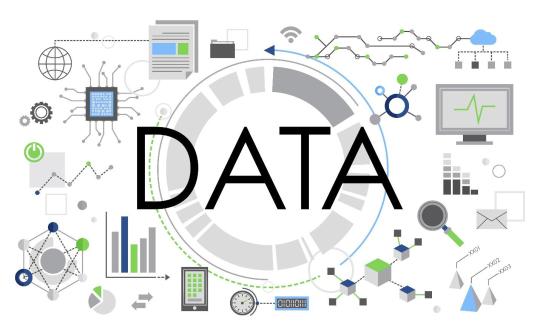
Hey there, web builders and curious minds! If you’re creating a website or running an online business, keeping user data safe is a must. One key way to do that is through data encryption. As someone who’s watched the web grow, I’m here to explain what encryption is, why it’s crucial, and how it works in web development. Let’s break it down in a friendly way, with clear insights, so you can make your site secure in 2025.
What Is Data Encryption?
Data encryption is like putting your information in a locked box that only the right key can open. It scrambles data—like passwords or credit card numbers—into a code that’s unreadable without the correct key. When users send or receive data on your website, encryption keeps it safe from prying eyes. A 2024 Norton report says 85% of data breaches involve unencrypted data, showing why encryption is non-negotiable.
In web development, encryption happens when data moves between a user’s browser and your server (like during a purchase) or when it’s stored (like in a database). The best web development agencies in India use encryption to protect clients’ sites, ensuring trust and safety.
Why Encryption Matters
Imagine a customer in Bhubaneswar buying from your online store. They enter their card details, expecting them to stay private. Without encryption, hackers could grab that info mid-transaction. A 2024 Verizon Data Breach Report found that 43% of cyberattacks target web applications, often exploiting weak security. Encryption stops this by making stolen data useless without the key.
Beyond safety, encryption builds trust. Users are 70% more likely to shop on sites with visible security measures, per a 2024 Statista survey. It also helps you meet laws like India’s Digital Personal Data Protection Act (DPDPA), which pushes for strong data protection. For developers working with the best web development agencies in India, encryption is a standard to keep clients and users happy.
How Encryption Works in Web Development
Encryption uses math to scramble and unscramble data. Here’s the simple version of how it fits into web development, without getting too nerdy.
1. Encryption During Data Transfer
When users visit your site, data travels over the internet. To keep it safe, websites use HTTPS, which relies on Transport Layer Security (TLS). TLS encrypts data between the browser and server, so even if someone intercepts it, it’s gibberish. For example, a Bhubaneswar e-commerce site uses HTTPS to protect checkout details. A 2024 Google report says 95% of web traffic is now HTTPS, up from 80% in 2020.
To set this up, developers install an SSL/TLS certificate on the server. It’s like a digital ID that proves your site is legit and enables encryption. Most hosting providers offer free certificates through Let’s Encrypt.
2. Encryption for Stored Data
Data sitting in your database—like user emails or payment info—needs protection too. Developers use algorithms like AES-256 to encrypt this data. AES-256 is super strong, turning data into a code that’s nearly impossible to crack without the key. A 2024 OWASP guide recommends AES-256 for sensitive data storage.
For instance, a Bhubaneswar hospital’s website might encrypt patient records in its database. If hackers break in, they get scrambled data, not usable information. Developers manage encryption keys carefully, often storing them separately for extra safety.
3. End-to-End Encryption for Communication
Some web apps, like messaging platforms, use end-to-end encryption. This means only the sender and receiver can read the messages—not even the server. Think of WhatsApp: messages are encrypted on your phone and only decrypted on the recipient’s. A 2024 TechCrunch study says 60% of users prefer apps with end-to-end encryption for privacy.
Practical Tips for Web Developers
Want to make encryption part of your web development? Here’s how to get started, based on what top developers do.
Use HTTPS Everywhere: Get an SSL/TLS certificate and force all traffic to use HTTPS. Tools like Cloudflare make this easy.
Pick Strong Algorithms: Stick to trusted encryption methods like AES-256 for stored data and TLS 1.3 for transfers. Avoid outdated options like MD5.
Secure Your Keys: Store encryption keys in a safe place, like a hardware security module, not in your code. A 2024 Snyk report says 30% of breaches happen due to exposed keys.
Test Your Setup: Use tools like Qualys SSL Labs to check your encryption strength. Regular tests catch weak spots before hackers do.
Stay Updated: Keep your software and libraries current. A 2024 Synopsys study found 20% of vulnerabilities come from outdated encryption tools.
Why This Matters in 2025
India’s digital economy is booming, with 900 million internet users in 2024, per Statista. As businesses go online, security is a top concern. Encryption isn’t just a tech detail—it’s a promise to your users that their data is safe. For Bhubaneswar startups or global brands, strong encryption sets you apart.Ready to secure your website? Start with HTTPS, use strong algorithms, and keep your keys safe. If you need help, the best web development agencies in India can guide you. Protect your users, build trust, and keep your site thriving in 2025!
#best web development agencies india#website design and development company in india#website development company in india#web design company india#website designing company in india#performance marketing services bhubaneswar
0 notes
Text
For a small business, money is in short supply. When you want to invest in software, you do not want to spend too much on those that will not have a significant ROI. Fortunately, there are several software you can use for free to optimize your business processes. Here are some of the best free tools in the market today. 1. Wix Website Builder Your business needs a website. Aside from your store, this is fertile ground for new clients, increased visibility, credibility, and cheap advertising. A free website builder such as Wix can give you a free account. Your role will be to focus on producing UI and UX designs for the site. Database administration and development courses offer training and skills in this area as well as Java, HTML, and coding competencies. As your business grows, though you might hire a website developer along the way, you will be equipped to contribute and steer your website’s direction. 2. Virtual Private Network CyberGhost provides a Virtual Private Network service (VPN) to aid in security. 88% of businesses in the UK suffered a cyber-attack in the last 12 months. This emphasizes the need to have a security system. Consequently, as your business grows, so will your security needs. VPN services can conceal your online activity and limit access to network content. CyberGhost offers good protection, a reliable connection, and is on OSes, which is a modern operating system. 3. Wrike Project Management The free version supports a maximum of five users, with no limit on collaborators. It also offers your business 2GB of storage. Also, it allows you to monitor group activities, share files, and manage tasks with ease. 4. Video Conferencing By join.me It’s been estimated that 50% of the workforce in the UK will be working remotely by 2020. For a business, this creates the need for a reliable collaboration tool. Join.me is one such tool, allowing up to 10 video call participants, live video feeds as well as screen sharing. 5. Hootsuite Social Media Listening Tool In this day and age, you cannot ignore social media listening. This is how you know what is being said about you and your competitors as well. For a small business that’s not yet ready to hire social media strategists or mega listening platforms, Hootsuite fills this gap. With its free version, you can manage several social networks, interact with followers as well as schedule posts. 6. MailChimp’s Forever Free Plan This is an excellent free emailing service. It’s offered to businesses sending out fewer than 12,000 emails to 2,000 subscribers per month. The deal allows you to use built-in sign-up forms to get subscribers from the web. The software also helps you design messages for your audience. 7. Zoho Docs Document Management This is an ideal solution for small businesses with light document loads. The free plan is available to 25 users, who get 5 GB of storage each. Further, you get unlimited file sharing, in-app chat for collaboration as well as the capacity to integrate to Dropbox. 8. SurveyGizmo Online Survey The surest way to get real feedback from your customers is through surveys. Asking your customers for feedback also makes your customers see you as a concerned business. SurveyGizmo allows you to manage a limitless number of surveys, questions, and responses. 9. Apptivo CRM While most tools for CRM are costly, complicated affairs, Apptivo CRM gives you a free starter software. It comes with 500 GB of data, detailed reporting, and some project management tools. For a small business, this is an advantage in that it helps you better understand the system and its limitations. When you do go for a premium service, you are better prepared at recognizing your business needs and the customizable options you will need. For a small business, the goal of taking up free services is to test the waters and see what brings value and what does not, before making expensive purchases. For this reason, the free services only offer limited features.
0 notes
Text
Top Tools for Website Design and Development

Introduction
In today’s digital age, website design and development have become the foundation of successful online businesses. From tech startups in Bengaluru to independent freelancers in Surat, the need for high-performing, visually engaging, and user-friendly websites is more critical than ever. But success in this space isn’t just about talent—it’s about using the right tools. The tools you choose can speed up your workflow, improve collaboration, and help you build scalable websites that meet modern demands.
In this blog, we’ll explore the most effective tools for website design and development, with a strong focus on how they are used locally across India, along with some unique insights and generic best practices to give you a comprehensive understanding.
Why Choosing the Right Tools Matters
Tools Influence Workflow and Quality
In the field of website design and development, tools act as the bridge between imagination and execution. Whether you’re working on UI design or backend functionality, efficient tools enhance productivity, reduce errors, and ensure higher quality outcomes.
Best Design Tools for Indian Creatives
Adobe XD
Adobe XD remains a favorite for designers working on website wireframes, prototypes, and high-fidelity mockups. It allows users to streamline client presentations and collaborate across cities—perfect for distributed teams in cities like Pune, Noida, and Hyderabad.
Figma
Figma's cloud-based nature has made it a hit among Indian freelancers and agencies alike. Real-time collaboration allows multiple designers and developers to work on a single file, saving time and reducing miscommunication.
Canva
Though traditionally seen as a graphic design tool, Canva is increasingly used for simple website mockups, particularly by freelancers in tier-2 and tier-3 cities who are building small business websites on a budget.
Popular Development Tools in India
Visual Studio Code
VS Code is the most preferred code editor among Indian developers. It supports all major programming languages used in website design and development, offers a huge extension library, and has a simple, efficient UI.
GitHub
Version control is essential for any serious development workflow. GitHub enables developers to manage code efficiently and collaborate across states and time zones, making it invaluable for Indian web teams.
CodePen
Indian front-end developers love using CodePen to test ideas, demonstrate design concepts to clients, and polish smaller components before integrating them into full projects.
Frameworks and Responsive Design Tools
Bootstrap
Bootstrap continues to be one of the most widely adopted frameworks for mobile-first design in India. It provides a standardized structure that saves time and ensures consistency—ideal for government portals and educational institutions.
Tailwind CSS
Tailwind CSS offers a utility-first approach that has found favor among Indian startups. Developers can create customized designs without writing a lot of custom CSS, which speeds up development and improves maintainability.
CMS and E-commerce Tools Tailored for Indian Users
WordPress
WordPress powers a majority of Indian websites due to its simplicity, plugin ecosystem, and local hosting support. From bloggers in Assam to retailers in Tamil Nadu, WordPress is a go-to platform for scalable and budget-friendly web projects.
Shopify
Shopify is being widely adopted by Indian small business owners looking to launch e-commerce platforms quickly. With pre-built themes and native payment options, it reduces technical hurdles for non-developers.
Project Management and Collaboration Tools
Trello and Notion
To keep track of development tasks and design milestones, tools like Trello and Notion are indispensable. Indian teams use them to manage content calendars, assign roles, and centralize documentation for each client project.
Slack and Zoom
With the rise in remote working, especially post-2020, Indian web agencies have adopted Slack and Zoom for daily communication, client demos, and virtual sprint reviews.
Testing and Performance Optimization Tools
PageSpeed Insights
Performance is a key aspect of website design and development, especially in India where users often access sites through slower connections. PageSpeed Insights helps diagnose speed issues and suggests actionable improvements.
SEO Auditing Tools
Search engine visibility is non-negotiable. SEO tools are regularly used by Indian developers and marketers to analyze keyword usage, structure meta tags, and optimize page load times for better Google rankings.
Tools for Multilingual and Regional Adaptation
WPML and Polylang
India’s linguistic diversity makes multilingual support a major requirement. Tools like WPML and Polylang allow developers to create localized content in Hindi, Tamil, Bengali, Marathi, and more—crucial for reaching broader audiences.
Unique Insights from Indian Web Professionals
Demand for Low-Budget, High-Value Tools
Indian freelancers and micro-agencies often balance functionality and cost. Free-tier tools and open-source solutions remain popular due to budget constraints while still delivering solid results.
Combining Traditional and Modern Techniques
In many Indian projects, there's a blend of classic tools like Photoshop with new-age platforms like Figma and Webflow. This hybrid approach helps meet varied client expectations and development capabilities.
Generic Tools for All Web Projects
Trello for Task Management
Regardless of team size, Trello is a handy tool for managing deadlines, creating Kanban boards, and assigning roles in any website design and development project.
Zoom for Client Communication
Zoom continues to be the platform of choice for client walkthroughs, team meetings, and virtual training sessions. Its stability and widespread familiarity make it ideal for Indian teams.
Conclusion
The right tools for website design and development not only simplify technical tasks but also elevate the overall user experience. Whether you’re developing a landing page for a boutique in Jaipur or building an e-commerce site in Chennai, leveraging these tools can significantly improve the quality, speed, and success of your work. Understanding local client needs and pairing that with global best practices allows Indian developers and designers to remain competitive and innovative in a fast-paced digital landscape.
FAQs
Q1. Which tools are best for beginners in website design and development? Canva and Figma are excellent choices for beginners due to their ease of use and learning resources.
Q2. What coding tool is most commonly used in India? Visual Studio Code is the most widely used code editor among Indian developers.
Q3. Can I design a professional website without coding? Yes, platforms like WordPress and Shopify allow you to build professional websites with little to no coding.
Q4. Are these tools available for free? Most tools offer free plans or trial versions, which are enough for freelancers and small projects.
Q5. How do Indian developers handle multilingual websites? They use tools like WPML or Polylang to support Indian regional languages.
Q6. Which design tool allows for real-time collaboration? Figma is ideal for real-time design collaboration, widely used in remote Indian teams.
Q7. What tools help improve website speed? PageSpeed Insights is commonly used to analyze and enhance website load times.
Q8. Do Indian freelancers use GitHub? Yes, GitHub is a standard for version control among both freelancers and agencies in India.
Q9. What tool is best for creating responsive designs? Bootstrap and Tailwind CSS are top choices for building mobile-friendly responsive websites.
Q10. How can I manage my team during a website project? Trello and Notion are widely used for task management and project documentation across India.
#website design and development#website designing#website development#website design#website development service
0 notes
Text
Visionaries in SaaS Companies – Baremetrics – Scaling Simplicity with Data Transparency

As the SaaS market sees a surge year by year, the competitors are growing too. It is a cloud computing model that drivers software over the internet. Instead of users downloading or installing software, the Saas allows applications through a web browser. A pioneer in this field is Baremetrics, as it is considered the best analytics dashboard in the SaaS companies market for scaling efficiently & making data-driven decisions.
Baremetrics has carved a unique path in the software-as-a-service landscape, championing clarity, transparency, and data-driven leadership.
The Rise of Baremetrics: A SaaS Gamechanger
Founded in 2013 by Josh Pigford, Baremetrics emerged out of a simple need: actionable, clear, and visual metrics for SaaS companies that use Stripe. At a time when most businesses struggled with fragmented analytics and time-consuming data extractions, Baremetrics delivered an elegant solution that plugged directly into payment processors to provide real-time metrics like MRR (Monthly Recurring Revenue), LTV (Lifetime Value), churn, and more.
This lean but powerful approach was immediately embraced by small to mid-sized cloud firms seeking simplicity and insights without the overhead of building in-house dashboards. What set Baremetrics apart was its commitment to transparency—both in its growth and in empowering customers to understand their own.
Vision and Leadership

[Source - Baremetrics]
The leadership at Baremetrics has continuously pushed for accessibility in data—removing the traditional barriers between business leaders and the numbers that drive their decisions. After the company was acquired by Xenon Partners in 2020, Baremetrics underwent a strategic transformation, but its core philosophy remained unchanged: data is only valuable if it's usable.
Today, Baremetrics serves hundreds of SaaS companies worldwide. The platform offers not just analytics but also forecasting, user segmentation, and engagement tools, making it a comprehensive SaaS intelligence engine.
The leadership team emphasizes product simplicity and user-first design. Every update, integration, and tool is built to help tech providers scale intelligently. Their commitment to democratizing data analytics has influenced how many other SaaS platforms are being built today.
SaaS Companies and the Need for Transparent Metrics
For many growing app developers, understanding customer churn, LTV, and revenue trajectories can be the difference between success and stagnation. Baremetrics fills a crucial role in this ecosystem, offering a plug-and-play solution that turns raw data into business intelligence. It enables SaaS founders, product managers, and C-suite executives to stay laser-focused on what matters.
This emphasis on core metrics has redefined how early-stage and growth-stage SaaS companies approach product-market fit and fundraising conversations. Investors, too, have come to trust Baremetrics dashboards as reliable sources of truth when evaluating company health.
Going Global: Market Influence and Expansion
Baremetrics isn’t just a success story in the United States. Its influence spans globally, with clients across North America, Europe, Asia, and Australia. The platform supports multi-currency tracking, international tax compliance, and diverse integration needs, making it a top choice for globally scaling digital platforms.
According to industry reports, the global SaaS market is expected to grow to $819 billion by 2030. As more businesses transition to subscription models, analytics platforms like Baremetrics are becoming essential. In this landscape, Baremetrics has established itself as not just a tool, but a strategic partner for SaaS growth.
Competitive Edge in a Crowded Market

[Source - ChartMogul]
The SaaS analytics space is crowded, with competitors like ChartMogul, ProfitWell, and Glew offering parallel services. However, Baremetrics differentiates itself with its seamless user experience, open company culture, and early-market entry advantage.
The Baremetrics Open Startups initiative, where companies publicly share their key metrics, has not only built trust with its user base but also set a new benchmark for openness in business. This initiative has been instrumental in building brand loyalty and reinforcing the values of accountability and transparency that are often preached but seldom practiced in SaaS companies.
How Baremetrics Became a SaaS Leader?
Baremetrics’ journey to becoming a recognized name among software companies has been fueled by three strategic pillars: simplicity, speed, and service. By focusing on clear, digestible data and removing friction from the analytics process, the company has empowered SaaS founders to make informed decisions quickly.
Moreover, Baremetrics has cultivated a robust community of entrepreneurs and data enthusiasts through content marketing, integrations, and partnerships. This has expanded their market presence while keeping customer acquisition costs relatively low—an essential move in the competitive SaaS economy.
Their deep understanding of SaaS metrics has allowed Baremetrics to evolve from a metrics dashboard to a full-fledged decision-making platform. Today, it enables predictive modeling, customer segmentation, and revenue forecasting—tools that are indispensable for SaaS companies navigating uncertain markets.
Leadership Style and Company Culture
What makes Baremetrics a unique player in the field of SaaS companies is not just its product but its internal culture. The leadership encourages openness, innovation, and agility. Even post-acquisition, the company maintained a startup culture—lean, fast, and intensely focused on solving user pain points.
The team is distributed globally, echoing the remote-first philosophy that many modern app developers adopt today. This approach not only broadens the talent pool but ensures cultural inclusivity and 24/7 customer service coverage across time zones.
The Future of SaaS Companies and Baremetrics’ Role

As artificial intelligence and automation reshape how data is consumed, Baremetrics is already exploring next-gen solutions to stay ahead. Integrating AI for anomaly detection, advanced forecasting, and personalized recommendations are among the developments in their pipeline.
In the broader SaaS economy, where retention has become more important than acquisition, tools that provide granular visibility into customer behavior will continue to gain traction. Baremetrics, with its pioneering role, is well-positioned to lead this shift.
Conclusion
Baremetrics exemplifies what visionary leadership in SaaS companies looks like—customer-focused, transparent, and always evolving. By helping thousands of tech ventures gain control over their growth metrics, Baremetrics has not only disrupted the analytics space but also redefined what it means to build a truly data-driven business. For any C-suite executive or startup founder in the U.S. or beyond, the Baremetrics story offers a valuable lesson: true innovation lies not in complexity, but in clarity.
Uncover the latest trends and insights with our articles on Visionary Vogues
0 notes
Text
5 Key Strategies for Mastering SEO in 2025: Insights from the Best Digital Marketing Experts

Search Engine Optimization (SEO) has long been the foundation of online marketing, but with the constant evolving nature of search algorithms and consumer behaviors, SEO practices are in a state of constant evolution. Approaching 2025, to be at the cutting edge means keeping abreast of trends, technologies, and methodologies that are transforming the face of SEO. In this article, we'll be sharing the 5 major strategies to excel in SEO in 2025 based on insights from top digital marketing gurus.
1. Adopting Artificial Intelligence and Machine Learning in SEO
Artificial Intelligence (AI) and Machine Learning (ML) are transforming all areas of digital marketing, and SEO is no different. In 2025, it will be essential for SEO professionals to know how AI and ML affect search engine rankings.
How AI and Machine Learning Are Changing SEO
Search engines such as Google utilize advanced AI models such as RankBrain and BERT to better interpret user intent. These systems learn from the sheer volume of data that search engines process, and this improves the delivery of relevant search results. As technologies related to AI improve, they will become ever more central to website ranking.
SEO implications include:
Deep content analysis: AI can now examine content in-depth, comprehending its context, relevance, and purpose, as opposed to mere keyword concentration.
Personalization amplified: Machine learning algorithms can provide customized search results depending on user activity, location, and interest, further enhancing SEO.
Optimization automated: SEO activities like keyword research, on-page SEO, and content suggestions can be automated using AI-based tools.
Evolution to AI-Powered SEO
To succeed in an AI-based SEO environment, marketers need to prioritize producing high-quality content that is aligned with user intent instead of using old-school keyword optimization. AI tools such as SEMrush, Ahrefs, and Google's own AI-based features can help to analyze content performance and ensure that it is compliant with changing search engine requirements.
In addition, keeping current with developments in AI technologies and knowing how they affect search engine algorithms will enable digital marketers to remain competitive.
2. User Experience (UX) and Core Web Vitals
Google has always taken user experience into account as a ranking signal, but in 2025, Core Web Vitals will be an even more important factor in how a website ranks in search. Core Web Vitals, which Google launched in 2020, are centered on three aspects of user experience:
Largest Contentful Paint (LCP): Tracks loading performance.
First Input Delay (FID): Measures interactivity.
Cumulative Layout Shift (CLS): Tracks visual stability.
Why Core Web Vitals Are Important to SEO
By 2025, user experience will become even more paramount when it comes to SEO rankings. Websites that have fast load times, deliver an excellent interactive experience, and achieve visual stability will rank better on search engines. This will resonate with Google's vision of delivering the optimal user experience by giving preference to sites that present users with speedy, responsive, and simple-to-use platforms.
How to Improve Core Web Vitals for SEO Success
To maximize for Core Web Vitals, online marketers need to:
Optimize page speed: Reduce load times through image compression, browser caching, and content delivery networks (CDNs).
Optimize mobile responsiveness: With mobile-first indexing widely adopted, websites should be entirely optimized for mobile use.
Boost interactivity: Introduce interactive components such as quickly loading forms, buttons, and links that trigger in response to user interaction in a timely manner.
Limit layout shifts: Keep content elements loading on the page in a steady manner to avoid sudden shifts which annoy users.
Implementing these tactics will result in better user experiences, lower bounce rates, and therefore better SEO performance.
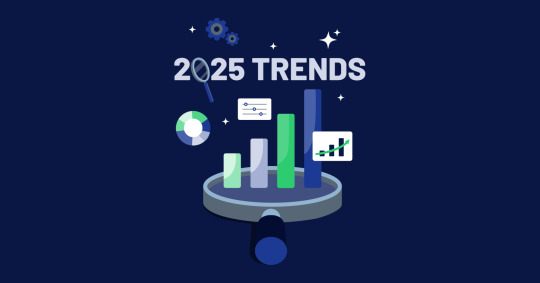
3. Voice Search Optimization
Voice search is no longer a futuristic concept—it’s here, and it’s growing rapidly. By 2025, it’s projected that more than half of all searches will be voice-activated. This means SEO professionals must adapt to voice search optimization to stay competitive.
The Rise of Voice Search
Voice search is based on natural language processing (NLP), which enables users to make queries using complete sentences rather than keywords. For instance, instead of typing "best digital marketing institute in Raipur," users can ask, "What is the best digital marketing institute in Raipur?" As voice search gains prominence, optimizing for the way people speak is important.
Voice Search Optimization Strategies
Highlight conversation keywords: Voice searches are conversational and longer. Thus, marketers need to highlight long-tail keywords as well as queries that users naturally ask.
Utilize structured data: Schema markup enables search engines to better interpret your content and answer voice search queries directly with ease.
Improve local SEO: As a lot of voice searches are based on location, local SEO optimization is important. Make sure that your business's name, address, and phone number (NAP) appear the same everywhere in directories and Google My Business listings.
By optimizing for voice search, companies can improve their alignment with the increasing use of voice-assisted devices such as smartphones, smart speakers, and virtual assistants.
4. Video Content and SEO Integration
Video content is one of the most interactive media around today, and it's not all about fun. In 2025, video SEO will be more critical than ever before, and video content will be the leader in search results.
Why Video SEO Will Dominate in 2025
Videos are highly ranked in search results since they interact with users more than text content. Indeed, Google has started displaying video results for some search queries. With the emergence of platforms such as YouTube, TikTok, and Instagram Reels, video content is bound to grow in significance.
Optimizing Video Content for SEO
To optimize video content for SEO, marketers should:
Use descriptive titles and tags: Similar to blog posts, video titles and descriptions must include appropriate keywords.
Include transcripts and captions: Adding transcripts and captions enables video content to be accessed by more people and allows search engines to crawl the content.
Utilize video sitemaps: A video sitemap enables search engines to locate and index video content more efficiently, making it more likely to show up in search results.
Promote video content: Share video content across social media channels to enhance views, engagement, and backlinks.
By prioritizing video SEO, companies can enhance their visibility and create more engaging content that connects with users.
5. E-A-T (Expertise, Authoritativeness, Trustworthiness)
Google's E-A-T rules have existed for some time, but in 2025, they will be more important than ever. E-A-T emphasizes the quality and credibility of content so that sites with high expertise, authoritativeness, and trustworthiness rank higher.
Why E-A-T Will Be Crucial in 2025
As there's more content available online, Google needs to make sure that users access high-quality and trustworthy information. Sites with good E-A-T have a better chance of ranking well, especially in fields such as medicine, finance, and law, where precision and trust are the top considerations.
Improving E-A-T for SEO
Develop high-quality content: Write comprehensive, thoroughly researched posts that offer value and information and make sure they're written by an expert in the niche.
Develop good-quality backlinks: Backlinks from high-authority sites convey trustworthiness to search engines.
Emphasize author credentials: Add author bios and links to their social media profiles to identify them as experts.
Maintain transparency: Share clear, easily accessible information on your business, privacy policies, and data protection practices.
Considering E-A-T can increase the credibility of your website and improve your SEO ranking.
Conclusion
It takes a mastery of SEO in 2025 to learn and adjust to changing strategies, from utilizing AI and machine learning to voice search optimization and optimization of user experience. As the digital marketing trend continues to shift, staying ahead of the game with innovative SEO strategies will be what sets businesses apart.

For the people of Raipur who wish to remain ahead in the field of digital marketing, VIDA by Vaya Media is the best Digital Marketing Academy in Raipur. Reputed for offering the best digital marketing course in Raipur, VIDA provides excellent digital marketing classes in Raipur, and students learn the skills they need to excel in SEO and other digital marketing fields. Being the leading digital marketing institute in Raipur, VIDA provides students with real-world knowledge and industry experience and molds them to be successful professionals in the ever-changing field of digital marketing.
0 notes
Text
Top Cloud Server Companies in India To Secure Data
These days, businesses desire more improvements in processes, de-duplicate data, and, above all, secure their information. Their main concern has now been efficiently addressed by the innovation that became known as “the cloud.” The technology, which revolutionized information storage, management, and processing, now transforms organizations from the inside out.
The evolution story of business today got a new milestone in the development of cloud server companies in India: scalable solutions driven by efficiency and security factors.
Just think of your business in a world without any infrastructural constraints, where it is free to access your data and applications from anywhere, even the other side of the globe. As if this flexibility were insufficient, the cloud ensures your business is shielded against cyber threats through the best and most robust cloud security mechanisms.
With companies exponentially moving to cloud solutions, demand for dependable cloud services has skyrocketed. But with so many service providers standing ready to supply this solution, which one do you choose?

However, let’s take a look into a few stats and data before delving deep.
Cloud computing’s market share was $371 billion in 2020, according to statistics, and is expected to grow at a 17.5% CAGR to reach $832.1 billion by 2025.
Cloud computing is used in the operations of 94% of businesses globally.
With a 32% cloud market share, AWS was the industry leader.
By 2025, it is anticipated that 85% of businesses will adopt a cloud-first strategy.
The insurance industry employs hybrid designs in 73% of cases.
Global Cloud Computing made $331 billion and is expected to increase by 23%
The cloud computing market in India has witnessed exponential growth over the past decade. With businesses transitioning to digital platforms, cloud servers have become the backbone of IT infrastructure. Several top-tier cloud service providers cater to Indian businesses, offering robust, scalable, and secure cloud solutions. Let’s explore some of the leading cloud server companies in India and how VSN International stands out as a profitable choice for businesses.
Top Cloud Server Companies in India
1. Amazon Web Services (AWS)
AWS is the most dominant cloud service provider globally and in India. It offers a wide range of cloud computing services, including computing power, storage, and networking.
Features:
Pay-as-you-go pricing model
Reliable infrastructure with multiple data centers in India
High security and compliance with industry standards
Scalable computing and storage solutions
2. Microsoft Azure
Microsoft Azure is another leading cloud platform providing enterprise-grade cloud solutions with integration into Microsoft’s ecosystem.
Features:
Hybrid cloud capabilities
AI and machine learning services
Advanced cybersecurity tools
Seamless integration with Microsoft 365 and other enterprise solutions
3. Google Cloud Platform (GCP)
GCP offers high-performance cloud computing solutions and data analytics tools, making it a preferred choice for businesses focused on big data and AI.
Features:
AI-powered analytics and big data solutions
Multi-cloud support and interoperability
Secure and scalable cloud storage
Competitive pricing for startups and enterprises
4. IBM Cloud
IBM Cloud provides a mix of public, private, and hybrid cloud solutions tailored for enterprises that require advanced AI and blockchain services.
Features:
AI-driven cloud computing
Blockchain and quantum computing solutions
High-performance computing with enterprise-grade security
Flexible hybrid cloud deployment options
5. Oracle Cloud
Oracle Cloud is known for its powerful database and cloud infrastructure solutions, catering to businesses that require extensive data processing capabilities.
Features:
Advanced database management services
High-speed networking and computing capabilities
Autonomous cloud security features
Cost-effective solutions for large enterprises
6. VSN International – A Profitable Cloud Partner for Your Business
While global giants dominate the cloud market, VSN International has emerged as a reliable and cost-effective cloud service provider tailored for Indian businesses.
Why Choose VSN International?
Custom Cloud Solutions: Unlike generic cloud providers, VSN International offers customized cloud infrastructure suited for small, medium, and large enterprises.
Competitive Pricing: Our cost-effective pricing models ensure businesses get the best cloud services without overpaying.
24/7 Local Support: We provide dedicated customer support to address any cloud-related concerns in real-time.
Seamless Integration: VSN International’s cloud solutions integrate effortlessly with third-party software and existing IT ecosystems.
Scalability & Flexibility: Businesses can scale their cloud usage as per their growth without incurring unnecessary costs.
Enhanced Security: With advanced security protocols and data protection measures, businesses can operate with confidence.
How VSN’s Cloud Services Is Profitable For Businesses
VSN Cloud is the highest quality cloud service provider in India, most known for innovative solutions and excellent customer service. The core philosophy of delivering high robust cloud security with reliable cloud services makes it a fit for all business sizes.
Their cloud infrastructure is designed to be highly scalable and flexible so that an organization can quickly change to meet changing demand.
Our Services Include
Managed Cloud Hosting: Comprehensive solutions that ensure optimal performance and security.
Disaster Recovery: Good backups and recovery services preserve critical data.
Cloud Consulting: Expert guidance to help companies navigate the path of a successful cloud.
VSN makes sure that a safe and reliable cloud environment is at the disposal of the company for its benefit. This has pulled businesses towards adopting cloud technology.
#cloud services#cloud solutions#it services#cloud technology#cloudcomputing#cloud consulting services
0 notes
Text
Blogging as a Tool for Expanding Learning and Engagement
Incorporating blogging into the learning environment enhances student engagement, reflection, and critical thinking. Blogs provide a platform for learners to articulate their thoughts, analyze course material, and engage in meaningful discussions beyond the classroom. Through blogging, students develop digital literacy skills, improve writing proficiency, and cultivate a habit of continuous learning (Richardson, 2017).
One significant advantage of blogging is its ability to foster collaboration and peer interaction. When students read and comment on each other’s posts, they gain exposure to diverse perspectives and engage in constructive dialogue. This interaction strengthens their ability to communicate ideas effectively and critically evaluate information. Additionally, blogging encourages students to connect course concepts with real-world applications, deepening their understanding of the subject matter. Research has shown that students perceive blogging as an effective tool for knowledge-sharing, which allows them to process and retain information while actively participating in their learning communities (Abdul Kadir & Tasir, 2020).
From an instructional design perspective, blogging aligns with modern design trends that emphasize learner engagement, digital collaboration, and personalized learning experiences (Mery, 2022). Integrating multimedia elements such as images, videos, and hyperlinks further enriches the learning experience and makes content more engaging and interactive.
To maximize the effectiveness of blogging in education, instructors should provide clear guidelines, encourage thoughtful discussions, and integrate reflective prompts. By doing so, educators create a dynamic learning environment where students actively contribute to knowledge construction.
Online Resources for Further Exploration
Edublogs: A Guide to Student Blogging This resource provides a comprehensive overview of how educators can implement blogging in the classroom, including best practices, student safety tips, and content creation strategies. https://www.theedublogger.com/
Common Sense Education: Blogging in the Classroom Common Sense Education offers insights into the benefits of student blogging, tools for getting started, and examples of how blogging can be used to enhance learning. https://www.commonsense.org/education/articles/blogging-in-the-classroom
References
Abdul Kadir, N. I., & Tasir, Z. (2020). Students' perceptions and information-sharing patterns in learning authoring system course through blogging. International Journal of Emerging Technologies in Learning, 15(19), 187–199. https://doi.org/10.3991/ijet.v15i19.10950
Mery, Y. (2022). Chapter 1: Design trends and approaches. Library Technology Reports, 58(5), 5–9. https://discovery.ebsco.com/linkprocessor/plink?id=9253bad4-858e-3d3a-8165-68c58b271e0c
Richardson, W. (2017). Blogs, wikis, podcasts, and other powerful web tools for classrooms (4th ed.). Corwin Press.
0 notes
Text
Social Media: Inclusive Public Sphere or Algorithm-Biased Community

Social media has revolutionized the way people interact and work together in the digital age. Unlike traditional media where communication is one-sided, social media platforms allow for two-sided discourse, influencing the formation of public opinions. As these platforms become the primary space for discussion, they raise important questions about the role of social media in our communication process. Can social media serve as an inclusive public sphere, or does it fragment discourse through algorithms and selective exposure?
Can social media serve as an inclusive public space?
It is crucial to first understand what makes communication platforms such as social media an inclusive space. The idea of “Public Sphere” will be applied to structure this discussion.
“Public sphere” is a concept developed by German philosopher Habermas in the 1990s, defining the term as “the arena where citizens come together, exchange opinions regarding public affairs, discuss, deliberate, and eventually form public opinions” (Habermas, Kruse et al, 1991, 2018). While a public sphere is originally recognized as “a specific place where citizens gather”, it now also accounts for communication infrastructure through which citizens send and receive information and opinions (World Bank Group, 2009). An ideal public sphere is participatory and holds the best protection against abuse of power (Kruse et al, 2018).

For a space to be considered a “public sphere”, it must satisfy several fundamental elements including “unlimited access to information, equal and protected participation, and the absence of institutional influence, particularly regarding the economy” (Habermas, 1991). It is argued that social media is the new public sphere as these platforms allow “greater access to information, more opportunities to engage in public speech, and an enhanced ability to undertake collective action” (Sharky, 2008). In reality, movements like #MeToo and #BlackLivesMatter, which are spread through social media showcase how it can amplify free speech and facilitate large-scale action (Buchanan et al, Corbett, 2020, 2022).
On the other hand, it is also argued that social media does not fully function as a public sphere due to restricted access, and corporate influence. While in theory, social media provide equal access to anyone, only 63.9% of the world population has access to these platforms (Statista, 2025). This digital divide prevents minorities from engaging equally. Furthermore, behavior on social media is constrained due to surveillance. As social media are spaces that “allow monitoring by others: friends, family, employers, police, and government entities” (Staples, 2014), this limits the freedom of users to “use the site for a meaningful and free exchange of ideas”. Instead, users are hesitant to express opinions for “fear of online harassment and the potential effect it has on their employment or relationships with family and friends” (Kruse et al, 2018).
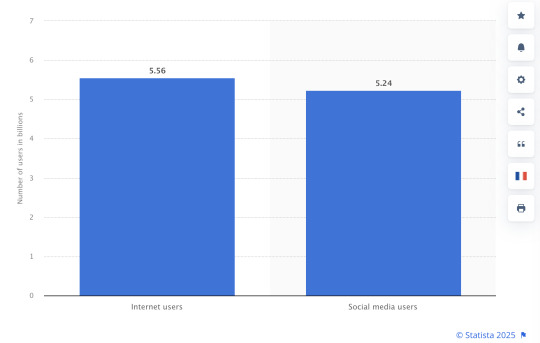
Algorithm and Bias - How It Defines Digital Communities?
Beyond accessibility and equality concerns, another factor influencing social media as a public sphere is the role of algorithms in curating content. The algorithms are responsible for what content users see and how they engage with information, leading to the question of whether the algorithm promotes one-sided arguments or provides meaningful information exchange.

It is argued as the algorithm of social media platforms promotes information based on user preferences and interests, differing opinions “can be easily and effectively excluded when users tend to seek out like-minded communities on the web” (Kruse et al, 2018). This results in an “echo chamber”, which the constant resurgence of a similar message leads to “an echo of one opinion” and forces out any counter-argument (Jamieson & Joseph, 2008). Diverse perspectives thus become restricted as users no longer make space for competing points of view.
However, algorithms do not specifically create bias but they respond to user behaviors. This suggests that the information promoted by the algorithms of social media platforms largely depends on user preferences and opinions. To counter the bias in algorithm response, social media platforms including Facebook, YouTube, and TikTok implement content diversity measures, such as fact-checking tools and mixed-content recommendations (Guess et al, 2020).
Final Verdict
“Can social media serve as an inclusive public sphere, or does it fragment discourse through algorithms and selective exposure?” remains a question that is up for debate. From my perspective, there is no denying that social media serves as a crucial tool for modern communication and meaningful discourse. However, these platforms do come with limitations in the information exchange process, suggesting further refinement is needed to ensure inclusivity and balanced discourse.
References
Buchanan, L., Bui, Q. & Patel, J.K. (2020). Black Lives Matter May Be the Largest Movement in U.S. History. [online] Nytimes.com. Available at: https://www.nytimes.com/interactive/2020/07/03/us/george-floyd-protests-crowd-size.html [Accessed 15 Feb. 2025].
Corbett, H. (2022). #MeToo Five Years Later: How The Movement Started And What Needs To Change. [online] Forbes. Available at: https://www.forbes.com/sites/hollycorbett/2022/10/27/metoo-five-years-later-how-the-movement-started-and-what-needs-to-change/ [Accessed 15 Feb. 2025].
Guess, A., Nyhan, B., & Reifler, J. (2020). Exposure to untrustworthy websites in the 2016 US election. Nature Human Behaviour, 4(5), 472-480.
Habermas, J. (1991). The Structural Transformation of the Public Sphere: An Inquiry into a Category of Bourgeois Society. Translated by Thomas Burger. Cambridge, MA: MIT Press.
Jamieson, K. H & Joseph, N. C. (2008). Echo Chamber: Rush Limbaugh and the Conservative Media Establishment. New York: Oxford University Press.
Kruse, L. M, Norris, D. R & Flinchum, J. R. (2018). Social media as a public sphere? Politics on social media, The Sociological Quarterly, 59:1, 62-84.
Shirky, C. (2008). Here Comes Everybody: The Power of Organizing without Organizations. New York: Penguin Press
Staples, W. G. (2014). Everyday Surveillance: Vigilance and Visibility in Postmodern Life. 2nd ed. Lanham, MD: Rowman and Littlefield.
Statista. (2025). Internet and social media users in the world 2025 | Statista. [online] Available at: https://www.statista.com/statistics/617136/digital-population-worldwide/ [Accessed 15 Feb. 2025].
World Bank Group. (2009). The public sphere. World Bank. https://documents.worldbank.org/en/publication/documents-reports/documentdetail/161991468155123204/the-public-sphere
1 note
·
View note
Text
BEST DIGITAL MARKETING AGENCY IN PRAYAGRAJ
If you’re looking for a top digital marketing agency in Prayagraj, “VibeVision” is one option you might consider. However, it’s always a good idea to research multiple agencies to find the best fit for your needs. Here are a few tips for finding a reputable digital marketing agency:
1. Check Their Portfolio : Look at their previous work to see if it aligns with your industry and goals. 2. Read Reviews and Testimonials : Client feedback can provide insight into their reliability and effectiveness. 3. Evaluate Their Services : Ensure they offer the specific digital marketing services you need, such as SEO, PPC, social media marketing, content creation, etc. 4. Consider Their Expertise : Look for an agency with experience in your industry or with similar projects. 5. Discuss Strategies and Goals : A good agency should be willing to discuss your goals and how they plan to achieve them.
In addition to VibeVision, consider reaching out to other local agencies or checking online reviews and rankings to find the best match for your business needs.
The Evolution and Impact of Digital Marketing
In today’s fast-paced, tech-driven world, digital marketing has become a cornerstone of business strategy. From small startups to multinational corporations, companies of all sizes are leveraging digital marketing to reach new audiences, build brand awareness, and drive growth. This article delves into the evolution of digital marketing, its core components, and the impact it has on modern business practices.
The Evolution of Digital Marketing
Digital marketing, as we know it, has evolved significantly over the past two decades. In the early 2000s, digital marketing primarily revolved around email campaigns and rudimentary websites. However, with the rise of social media platforms, search engine optimization (SEO), and mobile technology, digital marketing has become far more sophisticated and multifaceted.
1. Early 2000s: The Advent of Digital Marketing — The Internet became more accessible, leading to the creation of websites and email marketing as primary digital marketing tools. — The introduction of search engines like Google began shifting marketing strategies towards search engine optimization (SEO) to improve online visibility.
2. 2010s: The Social Media Boom — Platforms like Facebook, Twitter, and Instagram emerged as powerful marketing channels, enabling brands to engage directly with their audience. — Content marketing and influencer marketing gained traction, emphasizing the importance of creating valuable content and leveraging influencer endorsements.
3. 2020s: Data-Driven and Omnichannel Approaches — The rise of big data and analytics has allowed marketers to better understand and predict consumer behavior, leading to more personalized and targeted marketing efforts. — Omnichannel marketing strategies, integrating various online and offline touchpoints, have become essential for providing a seamless customer experience.
1 note
·
View note